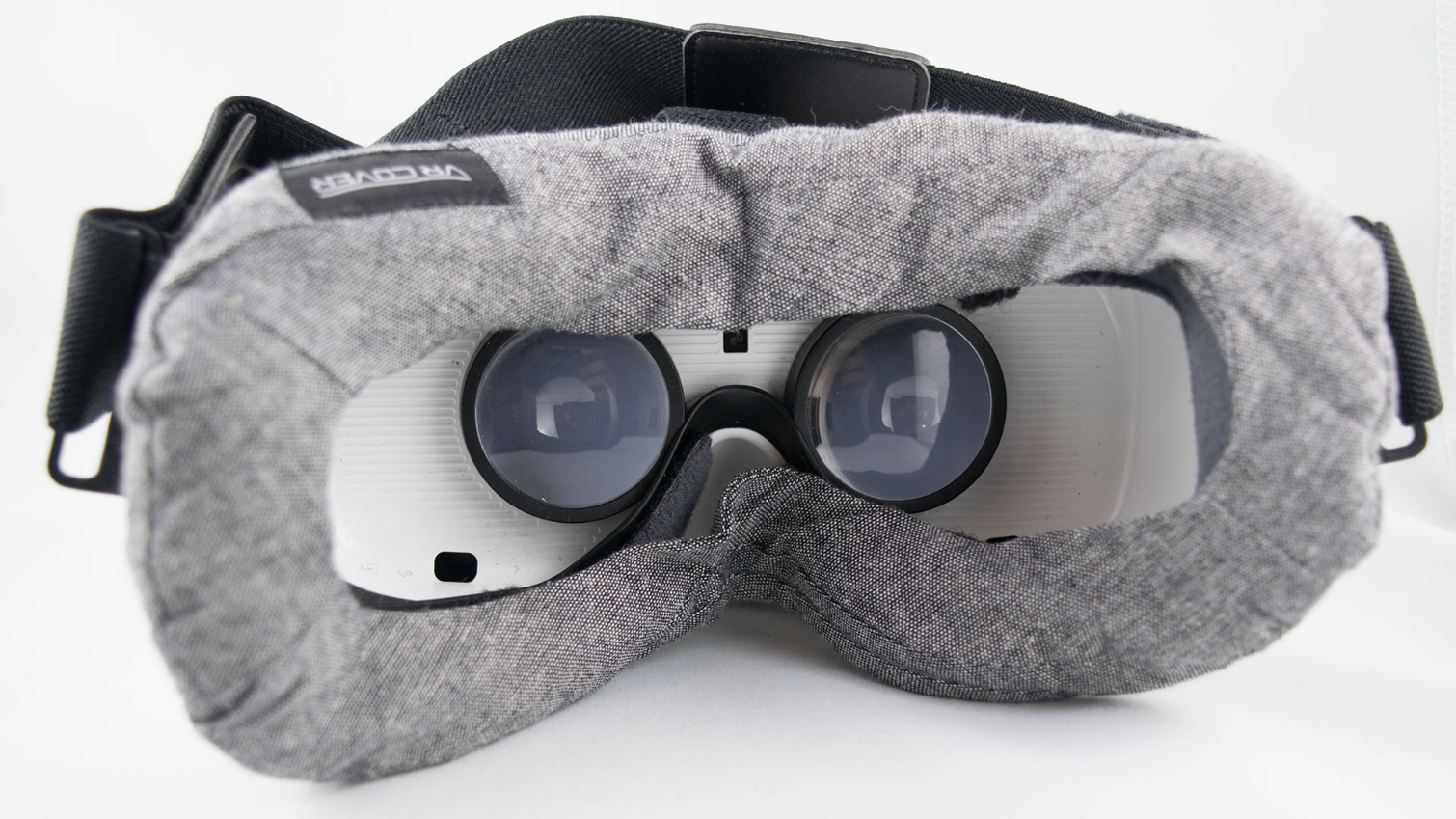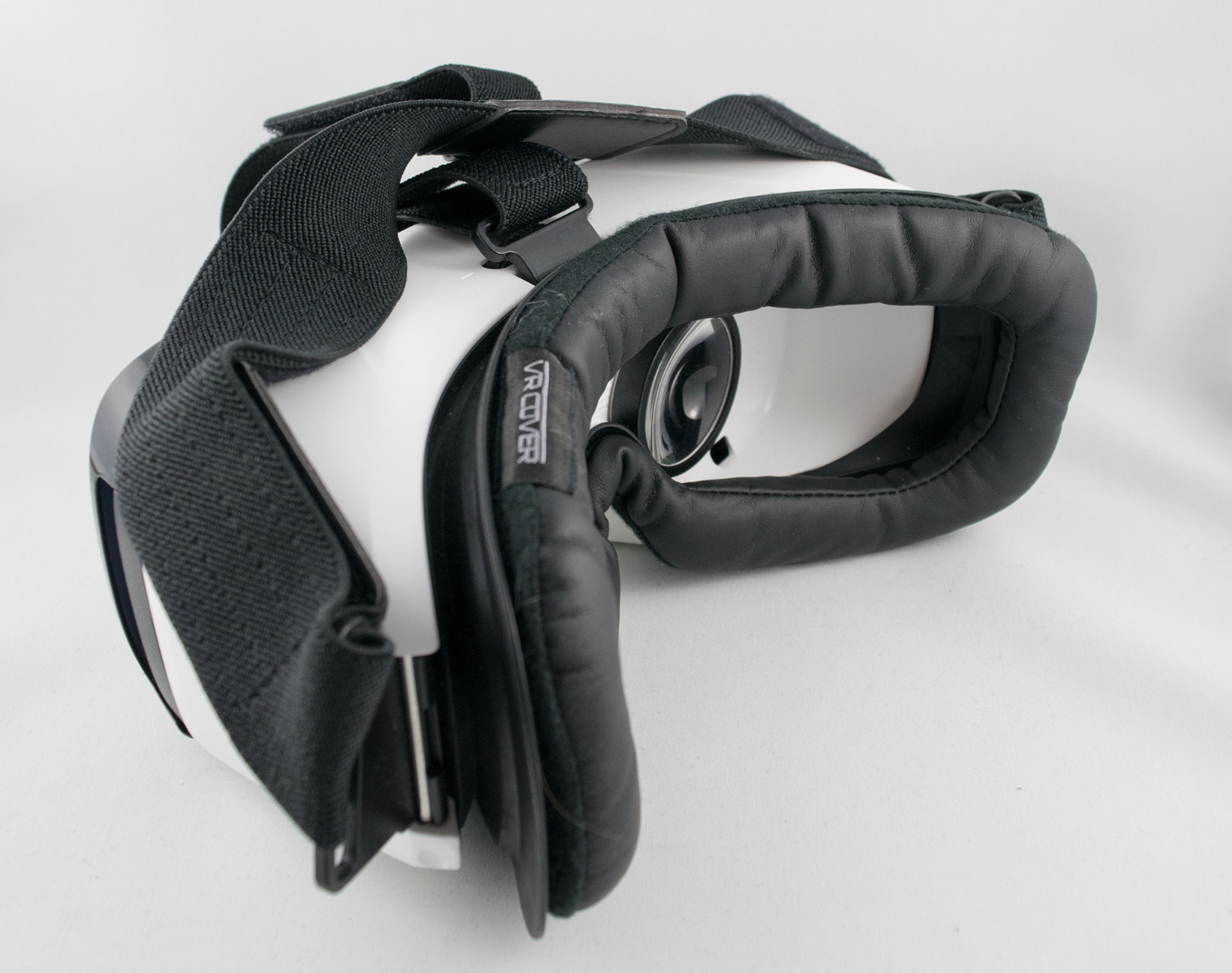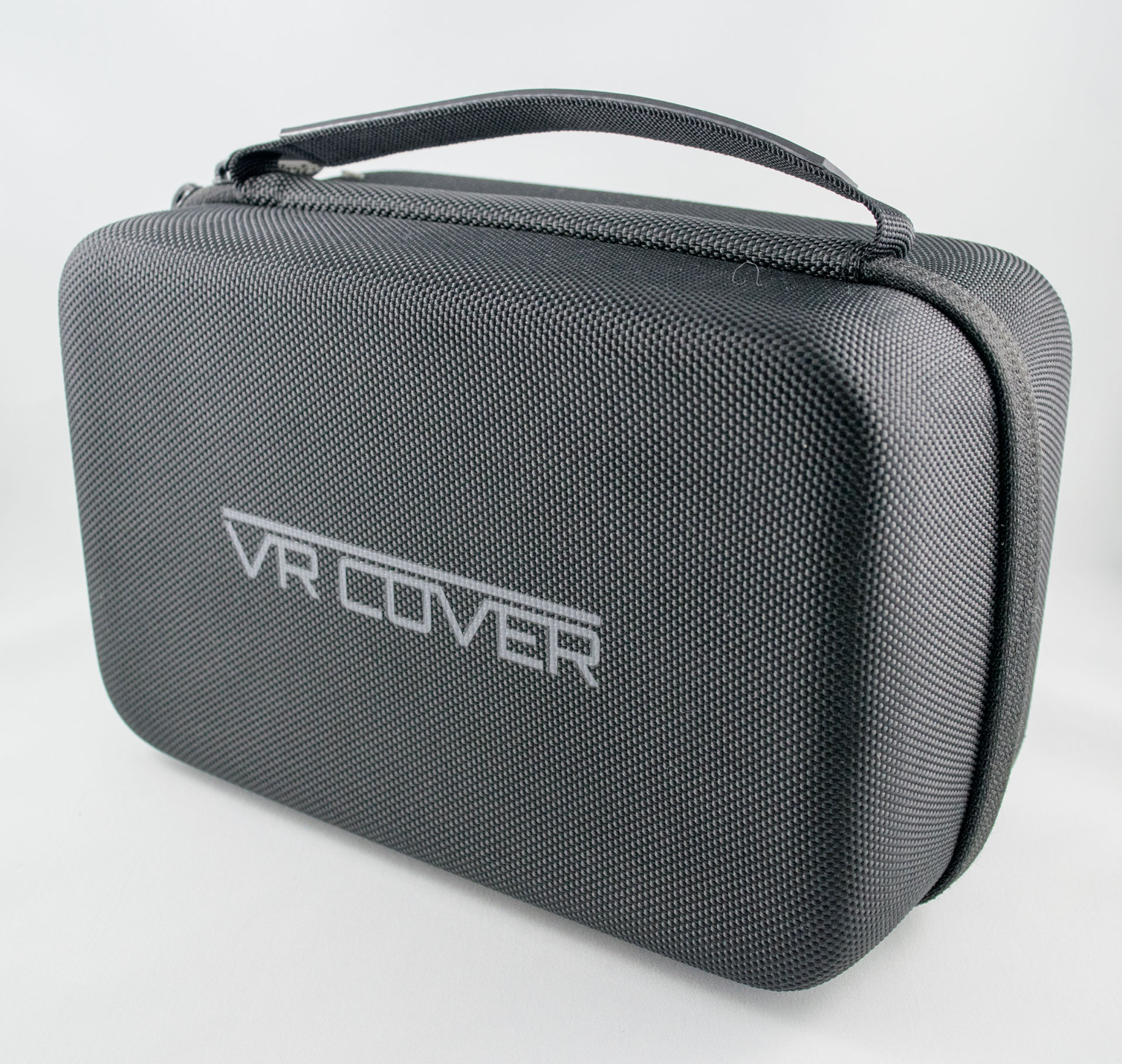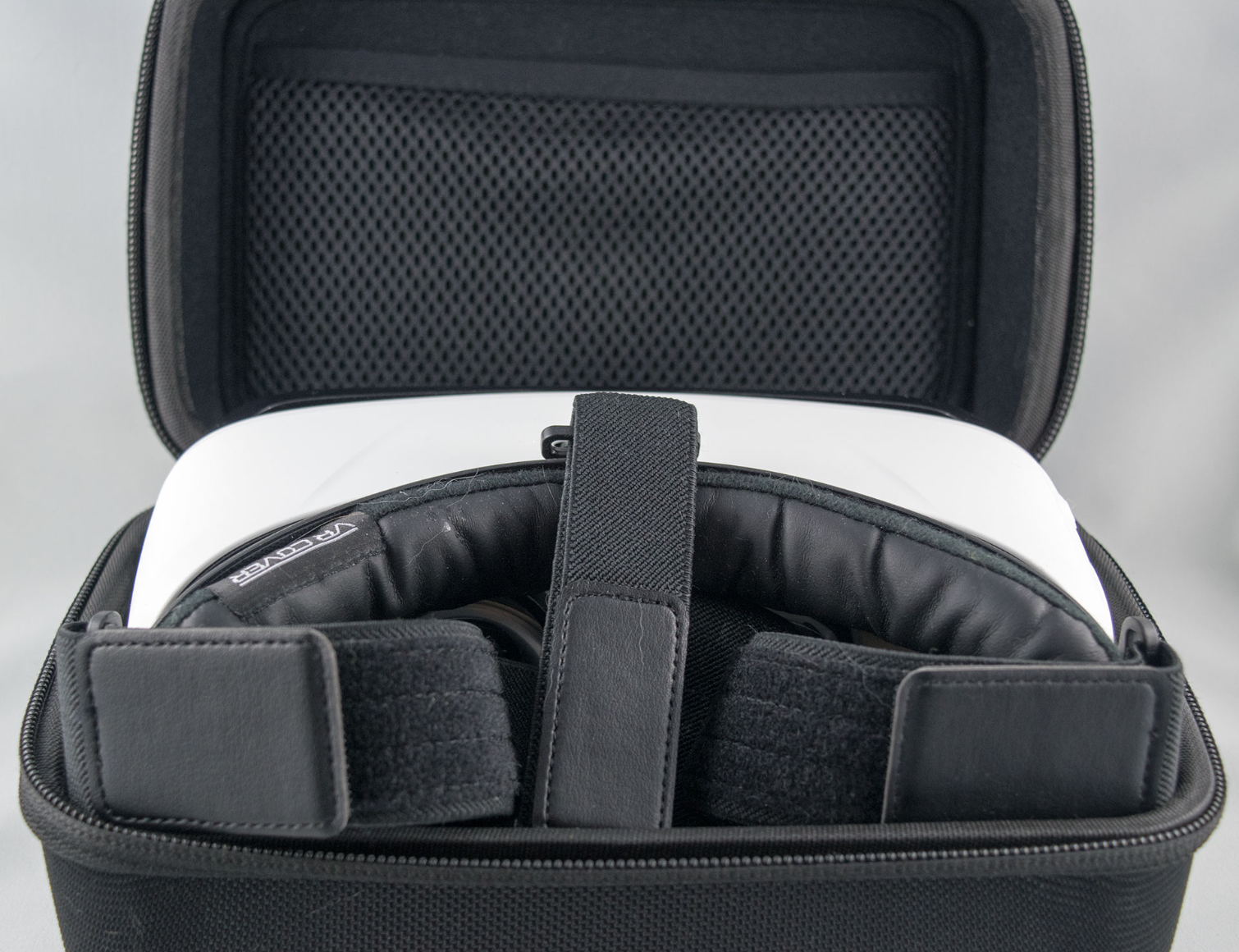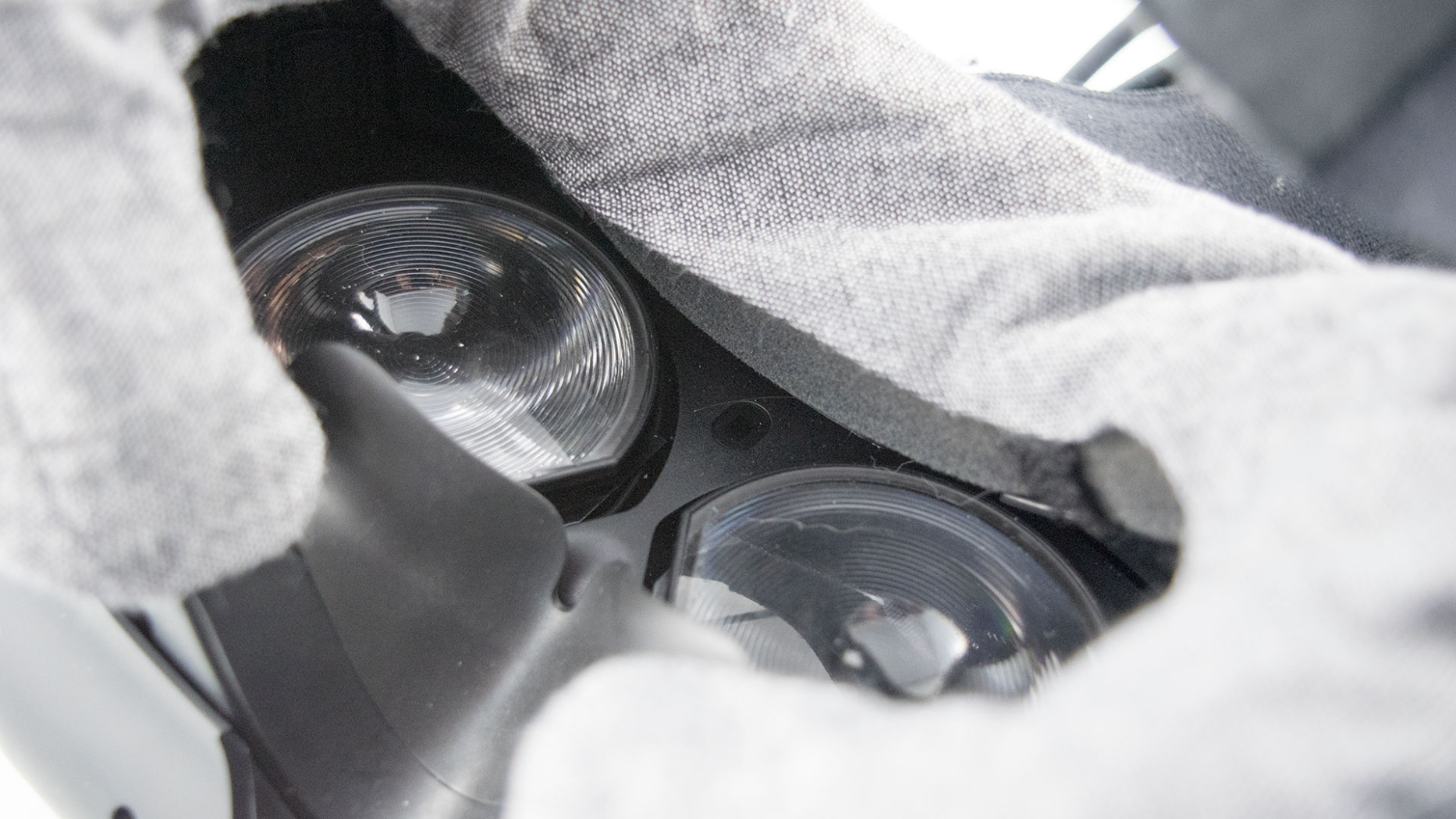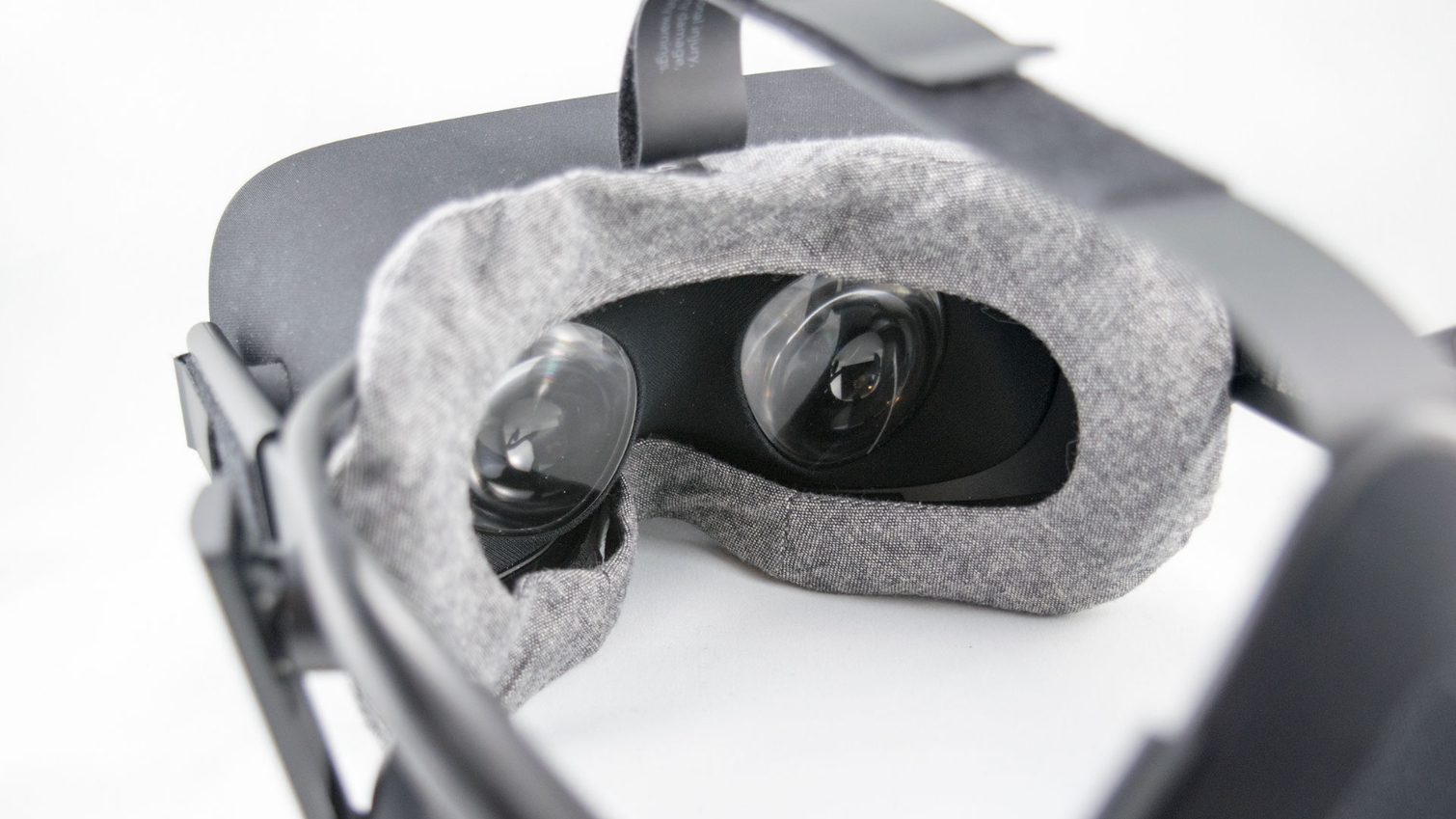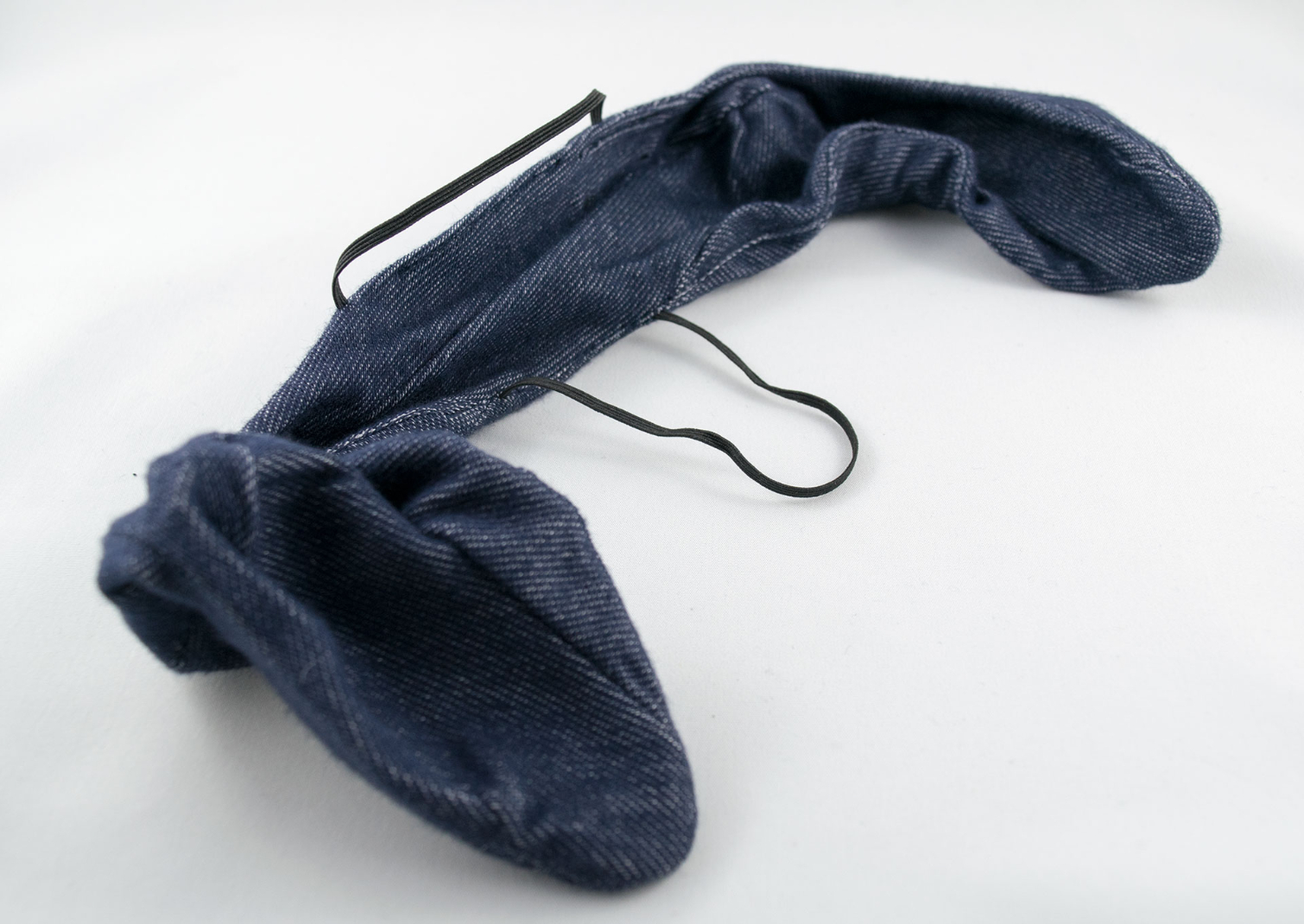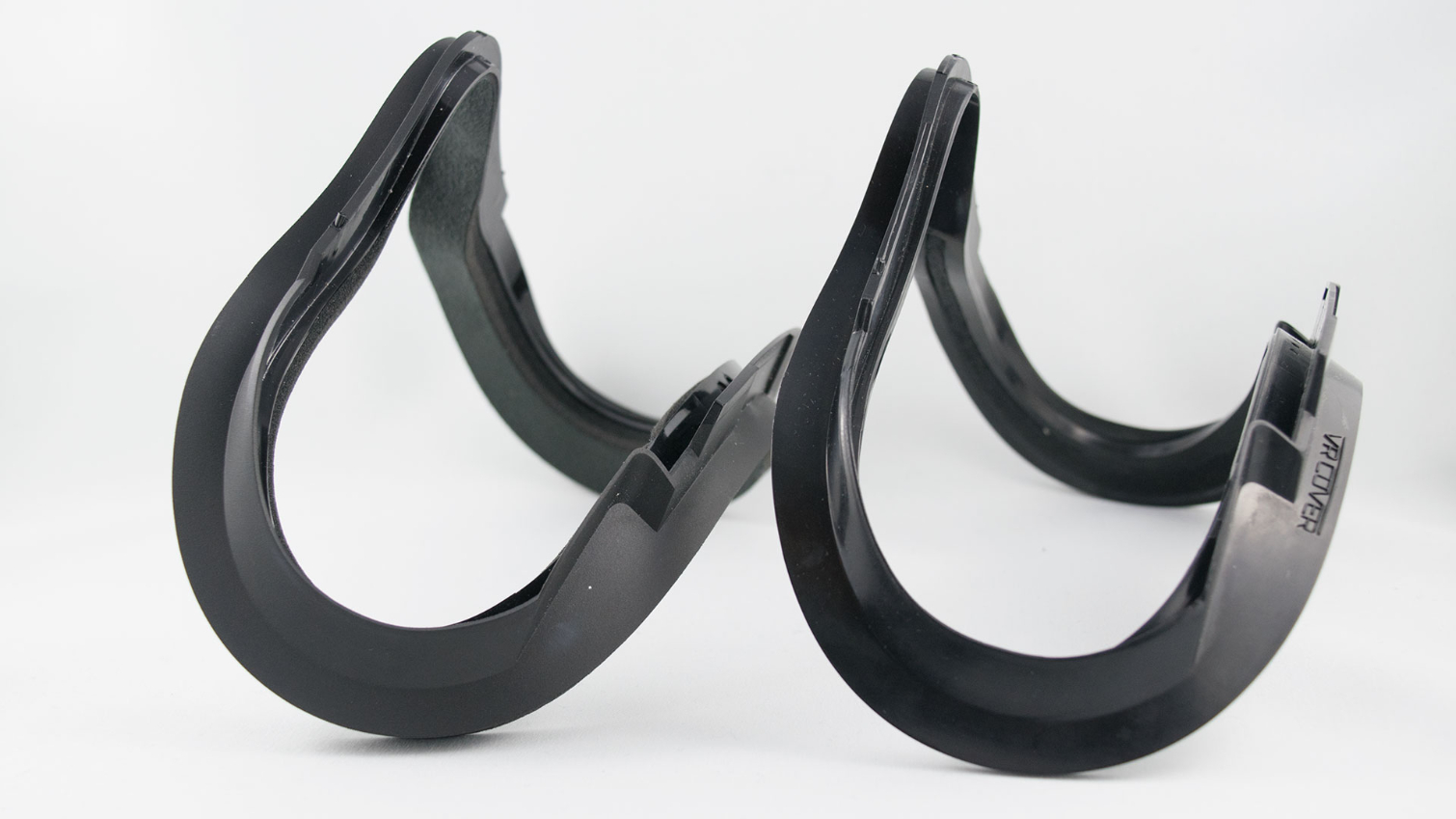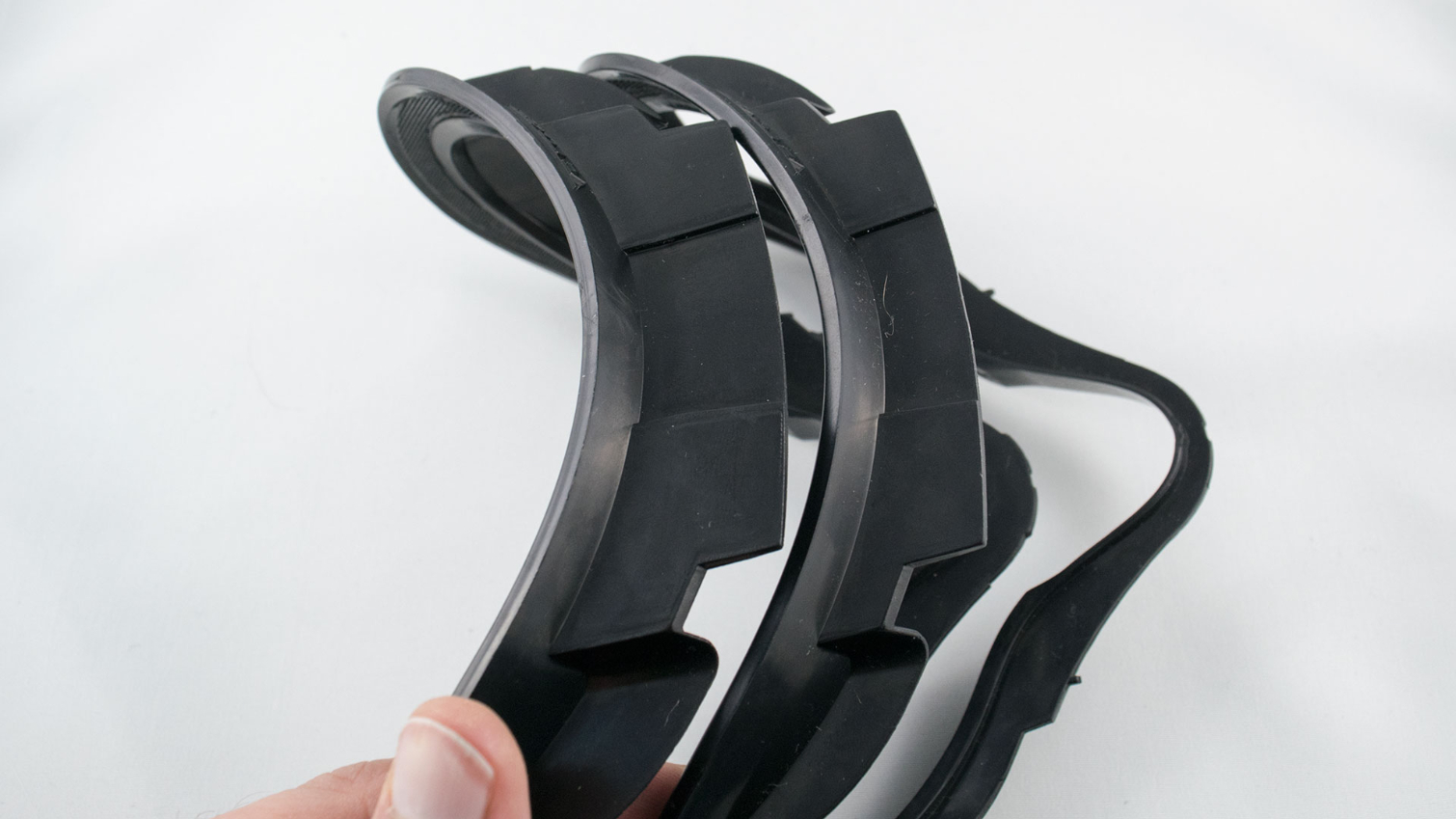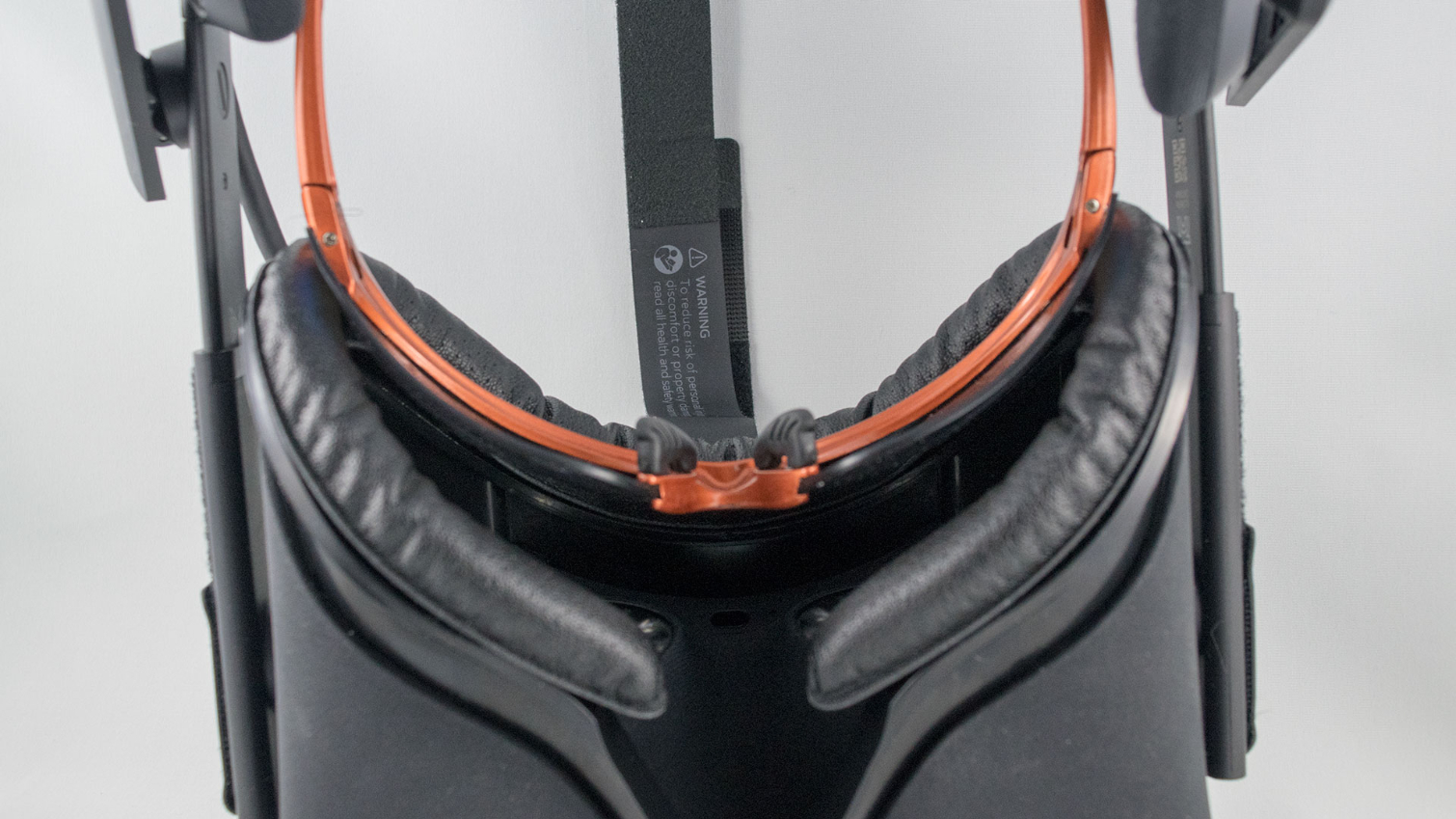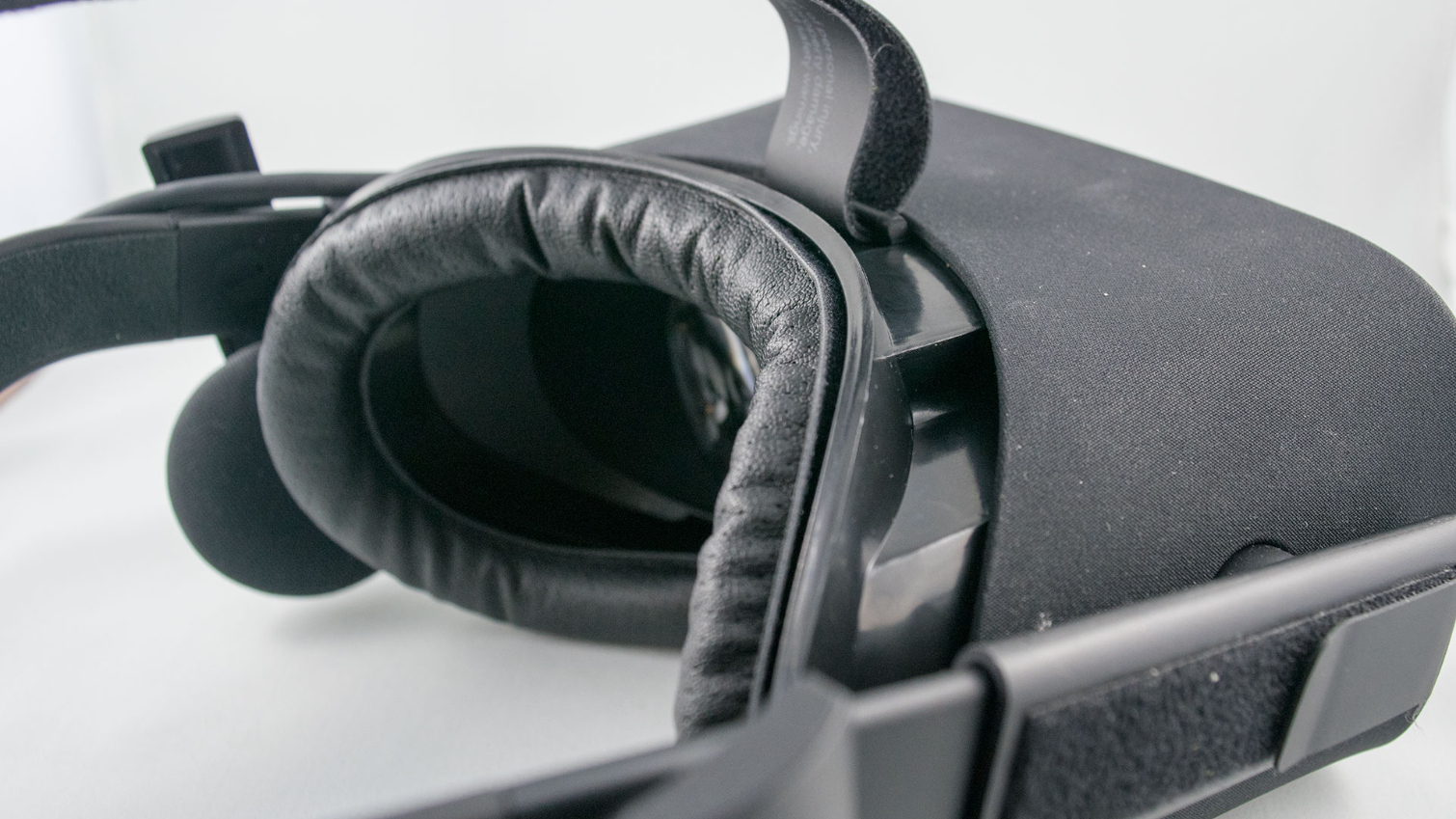VR Cover Accessories: A Close Look At The Whole Product Stack
Sharing VR experiences is a surefire way to grow the industry and show the general public the benefits of virtual reality, but this approach has a major drawback that it seems not a lot of people realize: it's terribly unsanitary.
Let me put it this way: You wouldn’t want to put on a sweatband after someone else was wearing it during a workout, right? Well, after an intense game of Space Pirate Trainer, Holoball, Audioshield, Ripcoil, or any other game that has you moving frantically, the face cushion of a Rift or Vive headset isn’t much different than that soggy sweat band.
The Rift and Vive both have foam cushions for comfort, but they both wick sweat like it’s going out of style. Worse still, you can’t clean the cushions. Even if you weren’t sharing it, would you put on the same sweatband you wore yesterday without washing it? If you game every day, Oculus and HTC are effectively asking you to put on the same sweat band every day, forever. HTC sells replacements, at least, but Oculus doesn’t sell individual accessories.
The last thing you want to do is ruin your expensive hardware due to poor sanitary conditions (let alone give yourself some awful fungus or something). It's in your best interest to protect your expensive investment with something washable. Fortunately, VR Cover offers a range of products that can prevent permanent damage to your hardware and provides a sanitary solution for sharing your device with others.
VR Cover makes washable and waterproof covers and replacement foam cushions made of moisture-proof materials. The company also offers a few other accessories, such as replacement facial interface brackets for the Oculus Rift, and a reinforced travel case for the Gear VR. VR Cover sent us almost everything in its product stack to try out.
After weeks of testing what VR Cover sent our way, we can say that some of VR Cover’s products are necessary for any HMD owner, but other products don’t deliver on their promise. Read on to save yourself frustration in the future.
Gear VR Accessories
VR Cover started its business selling washable cloth covers for the Oculus DK2 developer kit, and the company quickly expanded to include products for the Samsung Gear VR Innovator edition developer kits. VR Cover doesn’t sell those products anymore, but it sells variations of the original VR covers for the retail versions that replaced the DK2 and Gear VR Innovator Edition.
Get Tom's Hardware's best news and in-depth reviews, straight to your inbox.
VR Cover offers three products for the retail Gear VR HMD. There's a washable cloth cover that fits over the Gear VR’s existing foam cushion, as well as a waterproof replacement foam padding and a reinforced carrying case for the Gear VR HMD.
The cloth covers wrap around the outer edge of the HMD and rest over the foam cushion. The outer edge of the cloth covers features four small strands of Velcro that keep the cushion in place, but curiously, the Velcro straps don’t attach to the back of the cushion at all. Instead, they're designed to adhere to the HMD. It would be much easier to install the VR cover if you could attach it to the bottom of the cushion.
The washable covers are nice to have, but they are a hassle to put on, and they still wick up moisture. If you plan to share your HMD with a large number of people in one day, like at a tradeshow, you should pick up a waterproof foam padding replacement. The replacement foam cushions come wrapped in a leather-like material that doesn’t soak up moisture, so you can quickly wipe it away. You can also clean the leather material with anti-bacterial wipes.
The replacement foam is also slightly thicker than the stock foam cushion that comes with the Gear VR HMD, which helps improve comfort somewhat.
When Oculus and Samsung released the first Gear VR Innovator Edition, the hardware came packed in a reinforced fabric case with a zipper. Samsung and Oculus quickly dropped the carrying case from the bundle, though. The follow-up developer kits and the retail hardware didn’t come with carrying cases, but if you want one, VR Cover will sell you one.
The case is the perfect size for the retail Gear VR HMD. The outside is wrapped in a denim-like fabric like you sometimes find on luggage. The case has a reinforced core that can handle an impact without losing its shape. On the inside of the top half, you’ll find a mesh pocket, which you can use to carry an extra VR cover, a lens cloth, or maybe some earbuds. Don’t expect to fit much in the pocket, as there isn’t much clearance inside the box above the HMD.
HTC Vive Accessories
Shortly after HTC released the Vive Pre, VR Cover started selling Vive covers. First, the company launched the standard washable cotton Vive covers. The dual layer cotton VR Covers fit over the Vive’s existing foam cushion and are held on with Velcro straps that slip under the cushions.
The cotton VR Covers fit loosely over the cushion, which leads to bunching and slack in between the Velcro straps. You should also be careful about the placement of the cover along the top edge. I found the cover would sometimes slip down into my field of view.
A washable cotton cover is helpful, but sometimes you need something that repels sweat, not wicks it. The HTC Vive offers room-scale movement, and some developers take full advantage of that to provide active experiences that often leave you sweaty. VR Cover offers a waterproof leather Vive cover as an option for Active gamers.
The leather cover is the same as the cotton cover, aside from the material. The cover fits over the existing foam and straps on with four Velcro straps. The leather cover won’t absorb sweat, so it protects the cushion from long-term damage. Be careful about letting too much sweat build up on the VR cover, though. There are components inside the Vive HMD that are sensitive to moisture. If your headset fails because of moisture build-up (especially salty sweat), your warranty won’t cover it. Make sure you to wipe the headset down regularly.
VR Cover also offers replacement foam cushions for the HTC Vive in case your original foam is already damaged, or you don’t want the hassle of attaching a fabric cover to your headset. VR Cover has four replacement cushions to choose from, including two waterproof versions, a cotton wrapped version, and a software velour version.
The cotton and velour cushions are the only two Vive accessories that VR Cover hasn’t sent us for evaluation. Both cushions are machine washable and feature 18mm of soft memory foam wrapped in their respective materials.
VR Cover sent us both moisture resistant cushions. These replacement cushions are filled with soft memory foam and are wrapped in water resistant polyurethane leather. The Pu leather cushions are available in two thicknesses, and each is thinner than the cotton and velour options. VR Cover offers a 14mm-thick option, which is comparable to the standard Vive cushion. VR Cover also offers a thinner 6mm option.
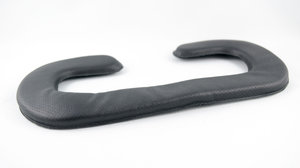
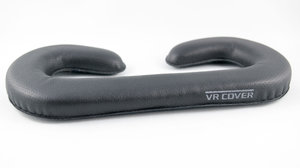
.
The 6mm cushion doesn’t offer as much padding, but it offers an advantage that outweighs comfort. With a narrower cushion, your eyes sit that much closer to the lenses, which in turn increases your visible field of view. The first time I put the Vive on with the 6mm cushion installed, it felt like wearing an entirely different headset. If you wear glasses, this cushion won’t do you any good, but for the rest of us, the thin cushion is almost a necessary upgrade.
Oculus Rift Accessories
Sometime after Oculus launched the Rift HMD, VR Cover released the first cloth Rift VR Cover, which didn’t go over well. Because of the design that Oculus chose for the Rift’s facial interface, VR Cover couldn’t use a Velcro attachment system as it did for the Vive and Gear VR products.
The first design that VR Cover came up with loosely fits over the Rift cushion, leaving it easy to slip out of place. VR Cover didn’t create a mounting mechanism for the Rift VR Cover. You simply slip it over the edges of the Rift and leave it in place. Many people reported issues with the Rift covers, which prompted VR Cover to create a short tutorial video demonstrating the correct method of installing the covers and how to put the headset on without disturbing the cover’s placement, which you can find on the product page.
VR Cover still sells this version of the cover, but I wouldn’t recommend it now that the company has other options, such as the stretchable, nose-free Oculus Rift VR Cover. The nose-free cover is made of a soft, stretchable fabric that helps keep it in place. It stretches around the outer edges of the Rift's facial interface to create a more secure fit than the other Rift VR Cover, and it also features two elastic straps that wrap around and latch onto the facial interface to ensure the cover isn’t going anywhere.
The nose-free cover fits much better than the version with the nose, but you must be careful about blocking the proximity sensor. The stretchy fabric doesn’t hold to the top as well as it does to the sides of the headset. It’s not uncommon for the VR Cover to trip the proximity sensor and activate the screens inside the Rift. If you pull the Rift away from your face before lifting the headset up, you shouldn’t have that problem, but you should always double check just in case.
VR Cover created fabric covers that go over the existing Rift headset because it didn’t have any other choice, but over the summer it sought to remedy that problem. The company worked with Oculus to create custom facial interface replacements for the Rift that include Velcro adhesive strips so that VR Cover could offer cushion replacements for Rift owners. In July, the company launched a Kickstarter campaign to help bring the product to life.
VR Cover’s Kickstarter campaign finished with nearly three times as much funding as the company required to bring the facial interface replacements to market. The product shipped to backers in late November, and now you can order them from the company’s website.
VR Cover created two different facial interface sizes. You can purchase a direct replacement that shares the same dimensions as the factory part, or you can purchase one with a longer body to add more clearance between the lenses and your eyes.
VR Cover advertises the long facial interface as an option for people who wear glasses, but don’t get your hopes up. It’s true that some people’s glasses touch the lenses when they put a Rift on, but most people who have trouble getting their glasses into the headset run into width constraints first, and VR Cover’s facial interfaces don’t do anything to address that problem. In fact, in some ways, they compound the issue.
Oculus' facial interface is made of rubberized plastic that has some flex to it, which allows you to force a pair of glasses in if you must, but VR Cover's replacements are made of rigid plastic that won’t give way.
The VR Cover facial interface is sold as a package with two Pu leather cushions--one thick, one thin--and a nose-free Rift VR Cover. The thin cushion with the VR cover over it is roughly the same thickness as the stock foam cushion. The thick cushion adds a little bit more padding, but it also compounds the glasses issue by making the gap for your face narrower at the sides.
A three-piece cushion option with gaps for glasses on the sides would help, but ultimately, we need a new facial interface with a wider opening to accommodate glasses properly.
Necessary Accessories
Some of the products in VR Cover’s lineup leave much to be desired. The cotton covers for the Gear VR, Vive, and Rift are difficult to attach to their respective headsets, and the material wicks up your sweat quickly, which can limit your play time. The cotton covers are better than the bare foam cushions, but with other options available, you’re probably better off skipping these.
The leather covers are a marked improvement over the cloth covers, but they lack convenience. Getting the cover into the correct position proved to be a hassle that you probably want to avoid.
The Pu leather memory foam cushions are by far the best option. These waterproof cushions are comfortable, washable, and easy to attach. If you don’t wear glasses, the VR Cover Rift facial interface is a worthwhile upgrade. If you own a Vive, the Pu leather cushions are a must-have item.
VR Cover sells its product line directly to customers through its webpage, www.vrcover.com. Prices start at $19 for the cotton VR Covers and $29 for the waterproof covers and replacement cushions. The replacement Oculus Rift facial interface sells for $49 with two Pu leather cushions and nose-free VR Cover. VR Cover also offers a premium kit with two extra washable velour cushions for $75.
Kevin Carbotte is a contributing writer for Tom's Hardware who primarily covers VR and AR hardware. He has been writing for us for more than four years.
-
Jeff Fx The memory foam VR Cover for the Vive is MUCH more comfortable than the stock foam. Between that and the welding-gear mod with some padding added, I can comfortably wear my Vive for hours.Reply -
bit_user Big thanks for this! I am nearing the demo phase of a VR project at work, and was about to start shopping for accessories like these.Reply -
Jim90 For folk that wear glasses you might also want to check out https://vr-lens-lab.com/Reply
They make prescription eyepiece inserts for VR headsets so that you don't need to wear your glasses. I purchased a set for the Oculus an they work well.

